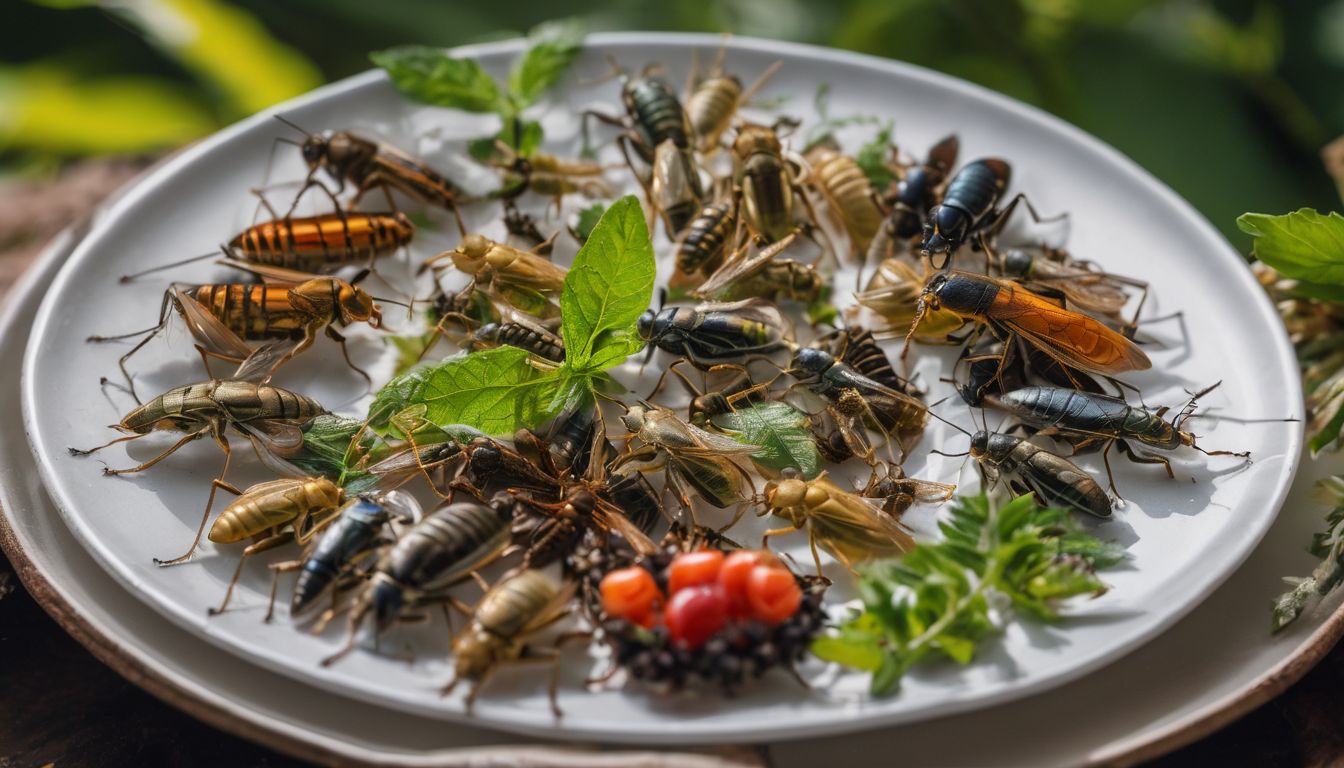Are you trying to eat healthier but feel overwhelmed by the diet choices out there? The Paleo Diet, often dubbed the ‘Caveman Diet‘, mimics what our ancestors might have eaten: plenty of plants and meat, minus modern-day processed foods.
This article will help you weigh up the advantages and drawbacks of going Paleo—could this be your step towards a more natural way of eating? Dive in for an easy-to-digest breakdown that could transform your plate.
Key Takeaways
- The Paleo Diet is a nutritional approach that encourages eating unprocessed meats, fruits, vegetables, and nuts, much like our Paleolithic ancestors.
- It eliminates processed foods and is high in protein and fiber but low in simple carbohydrates and sugar, which may lead to improved blood sugar levels, weight loss, and reduced blood pressure.
- However, the diet can be costly due to its reliance on organic produce and grass – fed meats. It also limits the intake of grains and dairy products which are common components of modern diets.
- A potential concern with the Paleo Diet is its high content of saturated fats from meat sources that could increase the risk of heart disease if not balanced with unsaturated fats from other foods.
- Before considering the Paleo Diet as an option for healthier eating habits or environmental sustainability goals, it’s crucial to consult with a healthcare professional to ensure it aligns with individual health needs.
What is the Paleo Diet?
The Paleo Diet focuses on consuming whole foods that our ancestors would have eaten during the Stone Age, such as unprocessed meat, fruits, vegetables, and nuts. It is high in protein, fiber, vitamins and minerals, while being low in simple carbohydrates, sugar and sodium.
High in protein, fiber, vitamins, and minerals
Embracing the Paleo Diet means you’re filling up on foods that are rich in essential nutrients. Think hearty portions of unprocessed meat delivering high-quality protein to build and repair tissues.
Pair these with a colourful array of vegetables teeming with fiber, vitamins, and minerals – all vital for maintaining energy levels, digestive health, and boosting your immune system.
Your meals will sidestep refined ingredients in favour of whole foods that our hunter-gatherer ancestors thrived on. Imagine feasting on seeds and nuts instead of bread or pasta; it’s about getting back to natural eating habits.
This focus lays the groundwork for overall well-being which aligns perfectly with an environmentally conscious lifestyle that values natural dietary choices. Now let’s take a closer look at how this diet stacks up against modern-day processed options.
Low in simple carbohydrates, sugar, and sodium
The Paleo diet is low in simple carbohydrates, sugar, and sodium. This supports a balanced blood sugar level and reduces the risk of health issues associated with excessive sugar intake.
By eliminating processed foods high in sodium, this diet encourages a healthier lifestyle.
Favouring whole and unprocessed foods instead of sugary snacks can also help to reduce environmental impact.
Pros of the Paleo Diet
Eliminates processed foods, promotes weight loss and may improve blood sugar and blood pressure levels. Includes lots of vegetables.
Eliminates processed foods
The Paleo Diet eliminates processed foods, which are often high in additives, preservatives, and artificial ingredients. By removing these from your diet, you can reduce your intake of unhealthy chemicals and promote a more natural way of eating that aligns with environmental sustainability.
Choosing whole foods over processed ones supports conservation efforts and reduces the carbon footprint associated with food production.
Opting for fresh fruits, vegetables, lean meats, and nuts instead of processed snacks and convenience meals can help limit packaging waste and contribute to a more environmentally friendly approach to nutrition.
May promote weight loss
By eliminating processed foods and focusing on whole, nutrient-dense options, the Paleo diet may promote weight loss. The emphasis on lean proteins, healthy fats, and high-fiber fruits and vegetables can help individuals feel fuller for longer periods.
With an intake low in simple carbohydrates and sugar but high in protein and fiber, the diet supports sustainable energy levels while aiding weight management.
Opting for a Paleo-based approach could lead to reduced calorie consumption due to the higher satiety of nutrient-dense foods. Additionally, the elimination of processed snacks and sugary treats may help cut down on empty calories that contribute to weight gain.
May improve blood sugar and blood pressure levels
Improving blood sugar and blood pressure levels is a potential benefit of the Paleo diet. High in protein and low in simple carbohydrates, this dietary approach may help regulate these key health markers.
The emphasis on whole foods and plant-centred meals further contributes to better blood sugar control and can support healthier blood pressure levels.
The Paleo diet’s focus on fresh, nutrient-dense options such as vegetables, lean proteins, and healthy fats aligns with its potential to improve overall health. By prioritising natural, unprocessed foods over refined sugars and high-sodium items, it offers a promising avenue for individuals seeking to manage their blood sugar and promote better cardiovascular wellness.
Includes lots of vegetables
The Paleo diet includes a variety of vegetables, providing essential vitamins, minerals, and fiber. These nutrient-dense foods support overall health and may reduce the risk of chronic diseases.
Incorporating a wide range of colorful vegetables into your meals can help you meet your nutritional needs while following the Paleo diet. Enjoying leafy greens, cruciferous vegetables, and vibrant bell peppers ensures that you’re getting a diverse array of nutrients to support optimal health.
Cons of the Paleo Diet
The Paleo Diet can be expensive and may limit grains and dairy, which could be challenging for some individuals. To learn more about the Paleo Diet’s pros and cons, keep reading!
Can be expensive
Following the Paleo diet can be costly due to its emphasis on whole, unprocessed foods. Grass-fed meats and organic produce are typically more expensive than their conventionally raised or grown counterparts.
Additionally, excluding grains and legumes can limit cost-effective sources of protein and fibre. However, prioritising local and seasonal produce, purchasing in bulk, and meal planning can help mitigate these expenses.
Choosing to follow a Paleo diet may require careful budgeting and resourcefulness to source high-quality ingredients while being mindful of environmental impact. It might involve investing time in researching affordable options like farmer’s markets or community-supported agriculture programs for sustainable food choices that align with conservation values.
Limits grains and dairy
The Paleo diet restricts the consumption of grains and dairy products. This is because these food groups were not typically consumed by early humans, who are the focus of this dietary approach.
By limiting grains and dairy, followers aim to consume foods that would have been available to our ancestors during the Paleolithic era. This may lead to an increased intake of nutrient-dense foods such as lean proteins, fruits, vegetables, and nuts.
By eliminating or reducing grains and dairy from their diets, individuals following the Paleo diet seek to reduce potential inflammation caused by certain components found in these food groups.
High in saturated fats
While the Paleo diet limits grains and dairy, it is high in saturated fats. This can be a concern for some individuals as too much saturated fat has been linked to an increased risk of heart disease and high cholesterol levels.
It’s important to balance the consumption of saturated fats with healthier options like lean proteins and unsaturated fats found in nuts, seeds, avocados, and fish.
Consuming excessive amounts of saturated fats may lead to health issues such as weight gain or an increased risk of cardiovascular disease. Therefore, when following the Paleo diet, it’s crucial to make mindful choices about the types and amounts of fats consumed.
The Paleo Diet and Overall Health
Experts have mixed opinions on the long-term health effects of the Paleo Diet, and there is a lack of comprehensive long-term studies to provide conclusive evidence. It’s important to consider individual health needs and consult with a healthcare professional before making any dietary changes.
Mixed opinions among experts
Opinions among experts on the Paleo Diet vary widely. Some argue that it’s a beneficial way to improve health by cutting out processed foods and consuming more plant-centered meals, which aligns with conservation and environmental values.
However, other experts point out the potential downsides such as the lack of long-term studies and restrictions on certain food groups.
The varying perspectives make it essential for environmentally conscious individuals to carefully consider their unique health needs before embarking on the Paleo Diet journey. Consulting with a healthcare professional can provide valuable guidance in making an informed decision regarding this dietary approach.
Lack of long-term studies
Experts have expressed concern due to the lack of long-term studies on the effects of the Paleo Diet. While short-term benefits such as weight loss and improved blood sugar levels have been observed, there is uncertainty about its impact over extended periods.
This raises questions about potential risks and sustainability that need further exploration.
The absence of comprehensive research makes it challenging to draw definitive conclusions regarding the diet’s long-term implications. Consequently, individuals considering adopting the Paleo Diet should proceed with caution, taking into account both its potential advantages and limitations until more extensive studies are conducted.
Is the Paleo Diet Right for You?
Consider your individual health needs and goals when deciding if the Paleo Diet is right for you. It’s important to consult with a healthcare professional before making any significant changes to your diet.
Consider your individual health needs
Assess your unique health requirements before adopting the Paleo diet. Evaluate any existing medical conditions and nutritional needs, seeking guidance from a healthcare professional.
Recognise that individual health factors vary widely, so what works for one person may not work for another. Listen to your body and make adjustments as needed to ensure the diet supports your overall well-being.
Evaluate personal health needs before committing to the Paleo diet. Seek advice from a healthcare professional and consider any existing medical conditions or dietary restrictions.
Consult with a healthcare professional.
Ensure to discuss any dietary changes with a healthcare professional. Expensive, complicated, and restrictive diets can impact your health in unexpected ways. Professional advice helps you navigate the best nutrition for your individual needs without compromising on environmental consciousness.
Conclusion
In summary, the Paleo diet offers high protein and plant-centered nutrition. Critics argue it restricts grains and dairy and may be expensive. Ultimately, consult with a healthcare professional to determine if it’s right for you.
FAQs
1. What is the Paleo Diet?
The Paleo Diet, also known as the Caveman, Stone Age, or Hunter-gatherer Diet, focuses on eating high protein and low carbohydrates like our Paleolithic ancestors.
2. Can you explain the main idea of the Paleo Diet?
The main idea of the Paleo Diet is to eat whole foods similar to what might have been eaten during the Paleolithic era, which means lots of plant-centered meals and animal proteins with low simple carbohydrates.
3. Are there health benefits to following a Paleo Plan?
Yes! Many people find that by sticking to a diet high in protein and low in processed foods they see improvements in their health.
4. What are some potential downsides of the Paleo Diet?
Some cons include it being high in saturated fats because of its emphasis on meats; plus this ancestral approach may cause you to miss out on certain nutrients found in grains and dairy.
5. How does the Paleo compare with other diets like Low-Carb or Primal Diets?
While similar because they all reduce carbohydrate intake, each diet has unique features: The Primal Diet includes more dairy than typical paleo plans; while Low-carb Diets might be less strict about food choices than those based on evolutionary theories.





